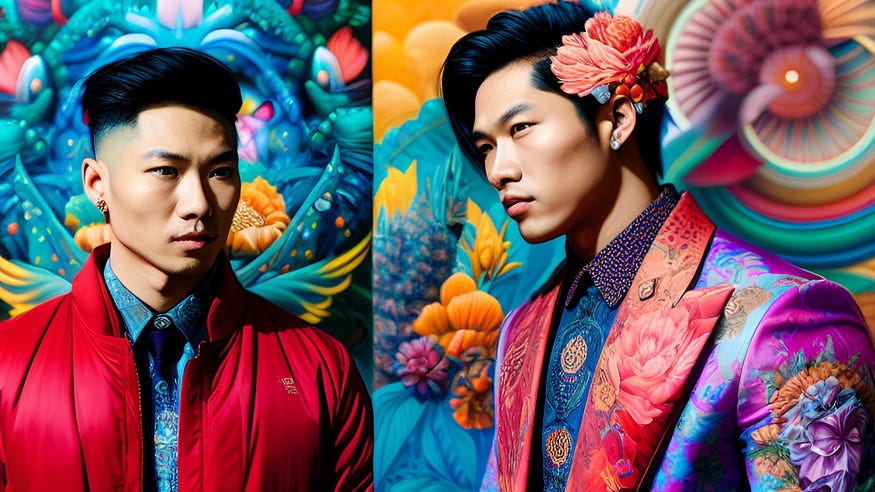
Welcome to this sartorial journey through Asia, where you will explore the rich tapestry of Asian men’s fashion. From the vibrant traditional attires, rooted in centuries of heritage, to the cutting-edge contemporary styles setting global trends,
you are here to see an array of stunning outfits that tell a tale of culture, history, and elegance.
India – The Regal Sherwani
The Sherwani is a regal and dignified garment that has been an integral part of Indian formal wear for centuries. Originating from the Mughal era, this attire has become synonymous with grandeur and style. The Sherwani consists of a long coat-like tunic, usually made of luxurious fabrics such as silk or brocade.
The Sherwani, a long coat-like garment worn in South Asia, is often synonymous with regality and grace. Traditionally worn for special occasions, the Sherwani has made its way into contemporary fashion, its designs evolving into a blend of traditional motifs and modern aesthetics.
Japan – The Timeless Kimono
KIMONO (from kiru and mono) literally means: "Something you wear". The kimono is a multifaceted garment that bears witness to centuries of history in its fabric. Although ancient and associated with Japan, it remains a global timeless piece.
Korea – The Honorable Hanbok
The Korean Hanbok, known for its vibrant colors and simple lines, is a symbol of Korean cultural heritage. Today, the Hanbok inspires many contemporary outfits, merging the grace of its silhouette with a modern design approach.
When people get married, their relatives will often wear hanboks to the wedding. I’m pretty sure everyone in Korea has worn a hanbok at some point in their lives. When babies are born it is custom, I believe, to take a family picture with the baby wearing a hanbok.
I’ve seen some pictures of myself wearing a hanbok when I was a baby, and I know my grandma actually owns a hanbok.
China – The Sophisticated Tang Suit
The Tang Suit, a hallmark of Chinese fashion, exemplifies sophistication and style. Contemporary renditions of this traditional outfit showcase the harmonious blend of the old and the new, maintaining the elegance of the Tang Suit while introducing fresh, innovative elements.
As the most prosperous and powerful dynasty in the history of China's feudal society, the Tang Empire (618-907) was so famous in the world that foreigners call the overseas Chinese people 'the Tang people', the places where they live 'Chinatowns' (literally meaning Tang People Streets) and the clothes they wear 'Tangzhuang' (Tang suit).
Philippines – The Barong Tagalog
Indonesia – The Classic Batik

Batik, with its intricate patterns and vibrant colors, is a pivotal part of Indonesian culture. The art of Batik isn’t confined to traditional attire, it has also found its way into modern clothing, blending the elegance of age-old design techniques with the versatility of today’s fashion.
.png)
.png)
.png)
.png)
.png)
.png)
.png)
No comments:
Post a Comment